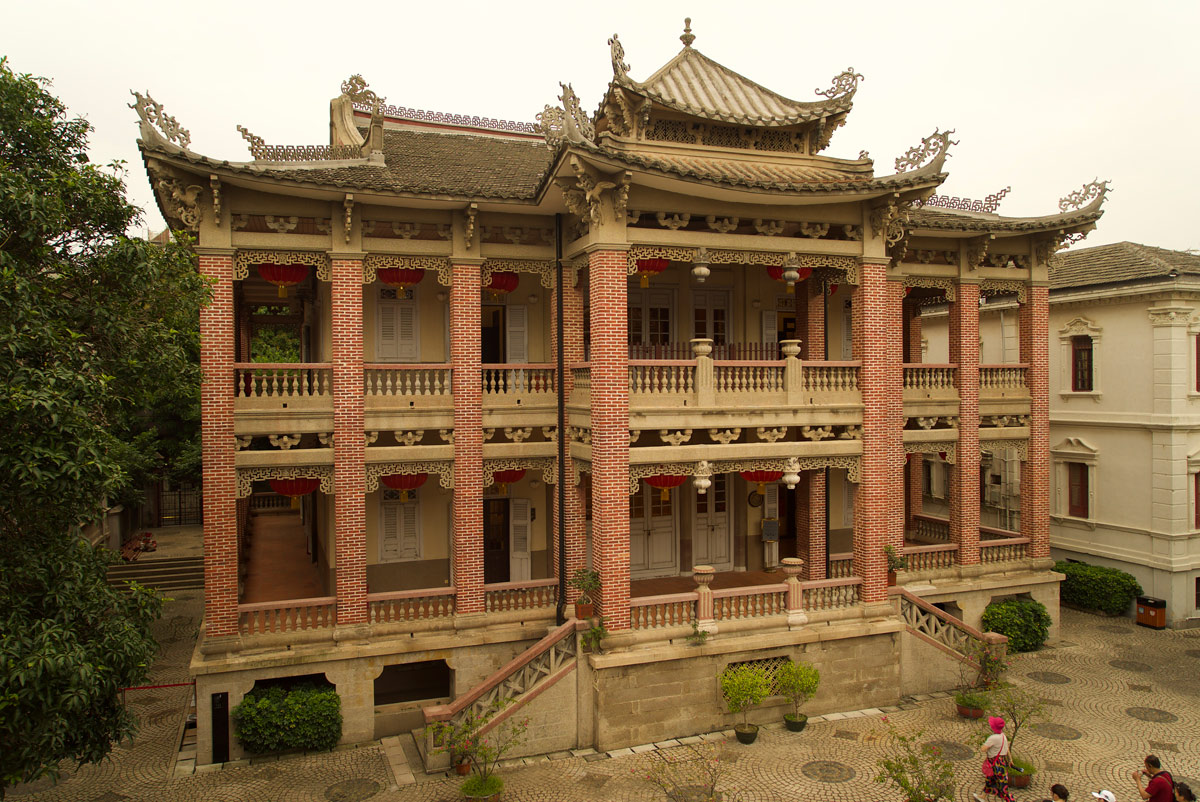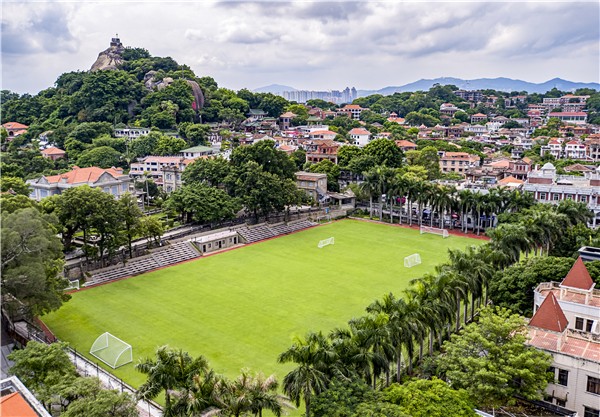Former Japanese Consulate, Police Station, and Staff Quarters (Ri Ben Ling Shi Guan Jiu Zhi 日本领事馆旧址)

The former Japanese Consulate, built in 1879, is the only 19th century embassy building still intact upon Kulangsu. The Japanese Police Station and Staff Quarters were built on the south side in 1928. In 1936, the Japanese consulate became the Japan consulate general. In 1937, after the outbreak of the Anti-Japanese War, the consulate was closed, […]
Kulangsu Organ Museum (Eight Diagrams Mansion / Bagua Mansion) (Ba Gua Lou 八卦楼)

The Kulangsu organ museum’s beautiful red dome is visible from across the bay in Xiamen. The museum, housed in the old Bagua Mansion, is one of Kulangsu’s most important tourist attractions–both for its impressive collection of organs and for its stately and imposing architectural style. The Bagua Mansion, also known as Eight Diagrams Mansion, is […]
Pianist Yin Chengzong’s house (Yin Cheng Zong Zhai 殷承宗宅)

Kulangsu’s most famous pianist, Yin Chengzong, still owns and periodically visits this hilltop house. It is one of the island’s most beautiful private homes, now inhabited by the pianist’s brother, Yin Chengdian, who is a first-rate musician in his own right and the former dean of the Xiamen Music School. In 1924, Yin’s father bought the […]
Hai Tian Tang Gou Mansion (海天堂构)

Hai Tian Tang Gou Mansion was built by Philippine Chinese Huang Xiuliang and Huang Nianyi between 1920 and 1930. The mansion is a complex of five villas in symmetrical styles laid out on both sides of the Middle Villa, which is the complex’ central axis. The mansion is regarded as a perfect marriage of eastern and western […]
Foreigners’ Football Field (Ren Min Ti Yu Chang 人民体育场 / Ma Yue Han Ti Yu Chang 马约翰体育场)

The Foreigners’ Football Field was built before 1878 and originally used as a lawn tennis court and cricket field. It was subsequently used primarily for playing soccer. In 1910, the court was an important venue for the reception ceremony for the AmCham delegation. This historic, sprawling soccer pitch serves as an informal divider between the Kulangsu […]
